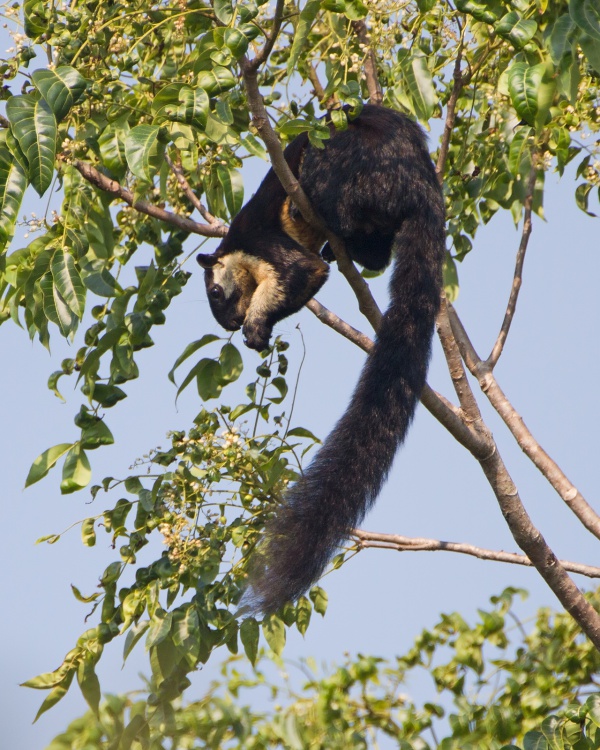Facts About Black giant squirrel
The black giant squirrel, also known as the Malayan giant squirrel, is one of the most striking members of the squirrel family. Belonging to the genus Ratufa, this large tree squirrel inhabits a range of countries in the Indomalayan region, including Bangladesh, India, China, Myanmar, Thailand, and Indonesia. It ranks among the largest squirrels in the world, with adults weighing between 1.05 and 1.25 kg. You can easily identify it by its distinctive bicolored fur, featuring dark upper parts and lighter underparts.
These squirrels thrive in forested areas from sea level up to elevations of at least 1,400 meters. Unfortunately, their numbers have been declining due to human activities such as urban expansion, logging, and agriculture. In the past decade alone, their population has decreased by up to 30%. Fortunately, some populations benefit from legal protections or local traditions that discourage hunting.
The black giant squirrel is diurnal and spends most of its time in the trees, although it occasionally ventures to the ground to forage. Its diet mainly consists of seeds, fruits, and leaves. When raising young, the black giant squirrel typically has one to two offspring, which it nurtures in a nest built within a tree hollow. These squirrels are generally solitary and prefer the seclusion of wild forested areas over plantations and human settlements.
There is still much to learn about this species. For instance, scientists are investigating whether what we currently categorize as Ratufa bicolor might actually encompass multiple distinct species. There are ten recognized subspecies, each with its own unique characteristics. If you're eager to observe these magnificent creatures, Kaziranga National Park in Assam, India, is an excellent place to start.

 Laos
Laos